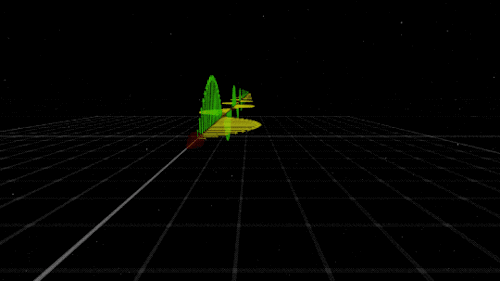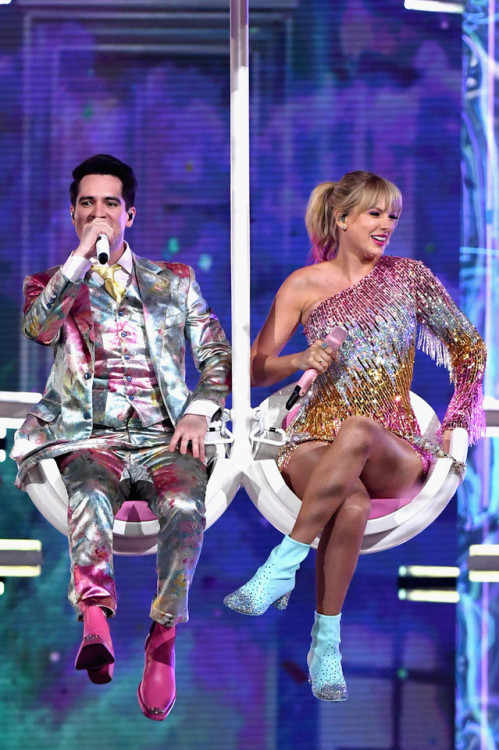Build A Rover, Race A Rover!
Build a Rover, Race a Rover!

Have you ever wanted to drive a rover across the surface of the Moon?
This weekend, students from around the world will get their chance to live out the experience on Earth! At the Human Exploration Rover Challenge, managed by NASA’s Marshall Space Flight Center in Huntsville, Alabama, high schoolers and college students operate human-powered rovers that they designed and built as they traverse a simulated world, making decisions and facing obstacles that replicate what the next generation of explorers will face in space.

Though the teams that build the rover can be a few people or a few dozen, in the end, two students (one male, one female) will end up navigating their rover through a custom-built course at the U.S. Space and Rocket Center. Each duo will push their rover to the limit, climbing up hills, bumping over rocky and gravelly grounds, and completing mission objectives (like retrieving soil samples and planting their team flag) for extra points – all in less than seven minutes.

2019 will mark the 25th year of Rover Challenge, which started life as the Great Moonbuggy Race on July 16, 1994. Six teams braved the rain and terrain (without a time limit) in the Rocket City that first year – and in the end, the University of New Hampshire emerged victorious, powering through the moon craters, boulder fields and other obstacles in eighteen minutes and fifty-five seconds.

When it came time to present that year’s design awards, though, the honors went to the University of Puerto Rico at Humacao, who have since become the only school to compete in every Great Moonbuggy Race and Rover Challenge hosted by NASA Marshall. The second-place finishers in 1994, the hometown University of Alabama in Huntsville, are the only other school to compete in both the first race and the 25th anniversary race in 2019.

Since that first expedition, the competition has only grown: the race was officially renamed the Human Exploration Rover Challenge for 2014, requiring teams to build even more of their rover from the wheels up, and last year, new challenges and tasks were added to better reflect the experience of completing a NASA mission on another planet. This year, almost 100 teams will be competing in Rover Challenge, hailing from 24 states, Washington, D.C., Puerto Rico, and countries from Bolivia to Bangladesh.

Rover Challenge honors the legacy of the NASA Lunar Roving Vehicle, which made its first excursion on the moon in 1971, driven by astronauts David Scott and James Irwin on Apollo 15. Given the competition’s space race inspiration, it’s only appropriate that the 25th year of Rover Challenge is happening in 2019, the 50th anniversary of Neil Armstrong and Buzz Aldrin’s historic Apollo 11 moon landing.

Interested in learning more about Rover Challenge? Get the details on the NASA Rover Challenge site – then join us at the U.S. Space and Rocket Center (entrance is free) or watch live on the Rover Challenge Facebook Page starting at 7 AM CT, this Friday, April 12 and Saturday, April 13. Happy roving!
Make sure to follow us on Tumblr for your regular dose of space: http://nasa.tumblr.com
More Posts from Thehkr and Others
“Words are so powerful. They can crush a heart, or heal it. They can shame a soul or liberate it. They can shatter dreams or energize them. They can obstruct connection or invite it. They can create defenses, or melt them. We have to use our words wisely.”
— Jeff Brown
NASA’s View of COVID-19
#COVID19 led to changes in human activities around the globe. We can see some of these changes from space. Some bodies of water have run clearer, emissions of pollutants have temporarily declined, and transportation and shipment of goods have decreased.

Along with our partner agencies – ESA and JAXA – we’re making satellite data available on the COVID-19 Earth Observation Dashboard, where you can explore some of the changes we can see from space.

But it’s not just what we can see. When the pandemic began, NASA engineers sprang into action to build ventilators, oxygen hoods and more to help save lives.

Make sure to follow us on Tumblr for your regular dose of space: http://nasa.tumblr.com
Oddly Satisfying #NASAMoonKits 🌙
What would you take with you to the Moon? 🧳

We’re getting ready for our Green Run Hot Fire test, which will fire all four engines of the rocket that will be used for our Artemis I mission. This test will ensure the Space Launch System rocket is ready for the first and future missions beyond Earth’s orbit, putting us one step closer to landing the first woman and the next man on the Moon!
In celebration of this important milestone, we’ve been asking everyone (yeah, you there!) to dust off your suitcase, get creative, and show us what you would take if you were heading to the Moon!
Take a moment to peruse these #oddlysatisfying #NASAMoonKits submitted by people like you, and let them inspire you to lay out your own masterpiece. Post a picture of what you’d pack for the moon using the hashtag #NASAMoonKit for a chance to be shared by us!
1. @alexandra4astronaut

A stunning #NASAMoonKit in blue. 💙
2.@timmerman.jess

Looks like a little friend is hoping to catch a ride with this #NASAMoonKit. 🐶
3. @guido_aerus_lombardo

A #NASAMoonKit fit for an explorer. 🧭
4. @melli.jp

Shout out to the monochrome #NASAMoonKit enthusiasts! 🖤
5. @mycactusdress

This #NASAMoonKit is thoughtfully laid out by a true fan. 📚
6. Mar Christian V. Cruz

This geologist’s #NASAMoonKit rocks. ⛏️
7. Nelli

Beauty in simple #NASAMoonKits. ✨
8. @urbanxkoi

This #NASAMoonKit successfully fits into our Expert Mode — a volume of 5” by 8” by 2” (12.7 cm x 20.32 cm x 5.08 cm). The Expert Mode dimensions are based on the amount of space astronauts are allowed when they travel to the International Space Station!
9. PWR Aerospace

Nothing like a cozy #NASAMoonKit. 🧦
10. LEGO

This #NASAMoonKit is clearly for the builder-types! 🧸
How to Show Us What’s In Your #NASAMoonKit:
There are four social media platforms that you can use to submit your work:
Instagram: Use the Instagram app to upload your photo or video, and in the description include #NASAMoonKit
Twitter: Share your image on Twitter and include #NASAMoonKit in the tweet
Facebook: Share your image on Facebook and include #NASAMoonKit in the post
Tumblr: Share your image in Tumblr and include #NASAMoonKit in the tags
If a #NASAMoonKit post catches our eye, we may share your post on our NASA social media accounts or share it on the Green Run broadcast!
Click here for #NASAMoonKit Terms and Conditions.
Make sure to follow us on Tumblr for your regular dose of space: http://nasa.tumblr.com
May the Four Forces Be With You!
May the force be with you? Much to learn you still have, padawan. In our universe it would be more appropriate to say, “May the four forces be with you.”

There are four fundamental forces that bind our universe and its building blocks together. Two of them are easy to spot — gravity keeps your feet on the ground while electromagnetism keeps your devices running. The other two are a little harder to see directly in everyday life, but without them, our universe would look a lot different!
Let’s explore these forces in a little more detail.
Gravity: Bringing the universe together

If you jump up, gravity brings you back down to Earth. It also keeps the solar system together … and our galaxy, and our local group of galaxies and our supercluster of galaxies.
Gravity pulls everything together. Everything, from the bright centers of the universe to the planets farthest from them. In fact, you (yes, you!) even exert a gravitational force on a galaxy far, far away. A tiny gravitational force, but a force nonetheless.

Credit: NASA and the Advanced Visualization Laboratory at the National Center for Supercomputing and B. O'Shea, M. Norman
Despite its well-known reputation, gravity is actually the weakest of the four forces. Its strength increases with the mass of the two objects involved. And its range is infinite, but the strength drops off as the square of the distance. If you and a friend measured your gravitational tug on each other and then doubled the distance between you, your new gravitational attraction would just be a quarter of what it was. So, you have to be really close together, or really big, or both, to exert a lot of gravity.
Even so, because its range is infinite, gravity is responsible for the formation of the largest structures in our universe! Planetary systems, galaxies and clusters of galaxies all formed because gravity brought them together.
Gravity truly surrounds us and binds us together.
Electromagnetism: Lighting the way

You know that shock you get on a dry day after shuffling across the carpet? The electricity that powers your television? The light that illuminates your room on a dark night? Those are all the work of electromagnetism. As the name implies, electromagnetism is the force that includes both electricity and magnetism.
Electromagnetism keeps electrons orbiting the nucleus at the center of atoms and allows chemical compounds to form (you know, the stuff that makes up us and everything around us). Electromagnetic waves are also known as light. Once started, an electromagnetic wave will travel at the speed of light until it interacts with something (like your eye) — so it will be there to light up the dark places.

Like gravity, electromagnetism works at infinite distances. And, also like gravity, the electromagnetic force between two objects falls as the square of their distance. However, unlike gravity, electromagnetism doesn’t just attract. Whether it attracts or repels depends on the electric charge of the objects involved. Two negative charges or two positive charges repel each other; one of each, and they attract each other. Plus. Minus. A balance.
This is what happens with common household magnets. If you hold them with the same “poles” together, they resist each other. On the other hand, if you hold a magnet with opposite poles together — snap! — they’ll attract each other.
Electromagnetism might just explain the relationship between a certain scruffy-looking nerf-herder and a princess.
Strong Force: Building the building blocks

Credit: Lawrence Livermore National Laboratory
The strong force is where things get really small. So small, that you can’t see it at work directly. But don’t let your eyes deceive you. Despite acting only on short distances, the strong force holds together the building blocks of the atoms, which are, in turn, the building blocks of everything we see around us.
Like gravity, the strong force always attracts, but that’s really where their similarities end. As the name implies, the force is strong with the strong force. It is the strongest of the four forces. It brings together protons and neutrons to form the nucleus of atoms — it has to be stronger than electromagnetism to do it, since all those protons are positively charged. But not only that, the strong force holds together the quarks — even tinier particles — to form those very protons and neutrons.
However, the strong force only works on very, very, very small distances. How small? About the scale of a medium-sized atom’s nucleus. For those of you who like the numbers, that’s about 10-15 meters, or 0.000000000000001 meters. That’s about a hundred billion times smaller than the width of a human hair! Whew.
Its tiny scale is why you don’t directly see the strong force in your day-to-day life. Judge a force by its physical size, do you?
Weak Force: Keeping us in sunshine

If you thought it was hard to see the strong force, the weak force works on even smaller scales — 1,000 times smaller. But it, too, is extremely important for life as we know it. In fact, the weak force plays a key role in keeping our Sun shining.
But what does the weak force do? Well … that requires getting a little into the weeds of particle physics. Here goes nothing! We mentioned quarks earlier — these are tiny particles that, among other things, make up protons and neutrons. There are six types of quarks, but the two that make up protons and neutrons are called up and down quarks. The weak force changes one quark type into another. This causes neutrons to decay into protons (or the other way around) while releasing electrons and ghostly particles called neutrinos.
So for example, the weak force can turn a down quark in a neutron into an up quark, which will turn that neutron into a proton. If that neutron is in an atom’s nucleus, the electric charge of the nucleus changes. That tiny change turns the atom into a different element! Such reactions are happening all the time in our Sun, giving it the energy to shine.
The weak force might just help to keep you in the (sun)light.

All four of these forces run strong in the universe. They flow between all things and keep our universe in balance. Without them, we’d be doomed. But these forces will be with you. Always.
You can learn more about gravity from NASA’s Space Place and follow NASAUniverse on Twitter or Facebook to learn about some of the cool cosmic objects we study with light.
Make sure to follow us on Tumblr for your regular dose of space: http://nasa.tumblr.com




The Perseid Meteor Shower Is Here!

Image Credit: NASA/Bill Ingalls
The Perseids are at their peak this week!
The Perseid meteor shower, one of the biggest meteor showers of the year, will be at its brightest early in the morning on Wednesday, August 12. Read on for some tips on how to watch the night sky this week – and to find out: what exactly are the Perseids, anyway?

Credit: NASA/Bill Ingalls
Your best chance to spot the Perseids will be between 2 AM and dawn (local time) the morning of August 12. Find a dark spot, avoid bright lights (yes, that includes your phone) and get acclimated to the night sky.
Your eyes should be at peak viewing capacity after about 30 minutes; though the Moon may block out some of the dimmer meteors, you should still be able to see up to 15-20 an hour. If you’re not an early bird, you can try and take a look soon after sunset (around 9 PM) on the 11th, though you may not see as many Perseids then.

Credit: NASA/MEO
If it’s too cloudy, or too bright, to go skywatching where you are, you can try again Wednesday or Thursday night – or just stay indoors and watch the Perseids online!
Our Meteor Watch program will be livestreaming the Perseids from Huntsville, Alabama on Facebook (weather permitting), [link to come] starting around 9 p.m. EDT on August 11 and continuing through sunrise.
So… why are they called the Perseids?
Because all of a meteor shower’s meteors have similar orbits, they appear to come from the same place in the sky – a point called the radiant.

The radiant for the Perseids, as you might guess from the name, is in the constellation Perseus, found near Aries and Taurus in the night sky.
But they’re not actually coming from Perseus, right?

Credit: NASA/Joel Kowsky
Right! The Perseids are actually fragments of the comet Swift-Tuttle, which orbits within our solar system.
If you want to learn more about the Perseids, visit our Watch the Skies blog or check out our monthly “What’s Up” video series. Happy viewing!
Make sure to follow us on Tumblr for your regular dose of space: http://nasa.tumblr.com
Meet the Artemis Team Returning Humans to the Moon
We. Are. Going 🌙
Today, we introduced the eighteen NASA Astronauts forming the Artemis team. Together, they’ll use their diverse range of backgrounds, expertise, and experience to pave the way for humans to return to the Moon, to stay.
Meet the heroes of the future who’ll carry us back to the Moon and beyond - the Artemis generation.
Joe Acaba

Fun fact: Joe is a veteran of the U.S. Peace Corps! Get to know Joe personally with this video –> Watch HERE.
Kayla Barron

Fun fact: Kayla got her start in public service through serving in the U.S. Navy. Get to know Kayla personally with this video –> Watch HERE.
Raja Chari

Fun fact: Raja’s nickname is “Grinder,” and he comes from a test pilot background. Get to know Raja personally with this video –> Watch HERE.
Jessica Watkins

Fun fact: Jessica is a rugby national champion winner and geologist. Get to know Jessica personally with this video –> Watch HERE.
Matthew Dominick

Fun fact: Matthew sums himself up as a father, a husband and an explorer. Get to know Matthew personally with this video –> Watch HERE.
Jasmin Moghbeli

Fun fact: Jasmin says she still wakes up every morning and it feels like a “pinch me moment” to think she’s actually an astronaut right now. Get to know Jasmin personally with this video –> Watch HERE.
Victor Glover

Fun fact: Victor’s dream is to work on the surface of the Moon. Get to know Victor personally with this video –> Watch HERE.
Jessica Meir

Fun fact: Jessica was five years old when she knew she wanted to be an astronaut. Get to know Jessica personally with this video –> Watch HERE.
Woody Hoburg

Fun fact: Woody used to spend summers away from graduate school working search and rescue in Yosemite National Park. Get to know Woody personally with this video –> Watch HERE.
Anne McClain

Fun fact: Anne is a West Point alumni who describes herself as an impractical dreamer. Get to know Anne personally with this video –> Watch HERE.
Jonny Kim

Fun fact: Jonny is also a U.S. Navy SEAL with a medical degree from Harvard. Get to know Jonny personally with this video –> Watch HERE.
Nicole Mann

Fun fact: Nicole is a U.S. Lieutenant Colonel in the Marine Corps! Get to know Nicole personally with this video –> Watch HERE.
Kjell Lindgren

Fun fact: Kjell was a flight surgeon, a physician who takes care of astronauts, before applying to be an astronaut himself! Get to know Kjell personally with this video –> Watch HERE.
Christina Koch

Fun fact: Christina set a record for the longest single spaceflight by a woman with a total of 328 days in space. Get to know Christina personally with this video –> Watch HERE.
Frank Rubio

Fun fact: Frank was a Black Hawk helicopter pilot in the U.S. Army and family medical physician. Get to know Frank personally with this video –> Watch HERE.
Stephanie Wilson

Fun fact: Stephanie was the voice in Mission Control leading our NASA Astronauts for the all-woman spacewalk last year. Get to know Stephanie personally with this video –> Watch HERE.
Scott Tingle

Fun fact: Scott said he wanted to be an astronaut in a high school class and the students laughed – look at him now. Get to know Scott personally with this video –> Watch HERE.
Kate Rubins

Fun fact: Kate is actually IN space right now, so she will have to get her official portrait when she comes home! She is also the first person to sequence DNA in space. Get to know Kate personally with this video –> Watch HERE. Stay up to date with our Artemis program and return to the Moon by following NASA Artemis on Twitter, Facebook and Instagram.
Make sure to follow us on Tumblr for your regular dose of space: http://nasa.tumblr.com.

Thank you music... for being there when nobody else is...
https://youtu.be/gwdL_Zn5nCE
- White Rabbit
-
 joyfulnerdwitch liked this · 3 years ago
joyfulnerdwitch liked this · 3 years ago -
 wilord1 liked this · 4 years ago
wilord1 liked this · 4 years ago -
 mcpesto liked this · 4 years ago
mcpesto liked this · 4 years ago -
 naughtybodypillow liked this · 4 years ago
naughtybodypillow liked this · 4 years ago -
 18009703 liked this · 5 years ago
18009703 liked this · 5 years ago -
 deimosperu-blog reblogged this · 5 years ago
deimosperu-blog reblogged this · 5 years ago -
 deimosperu-blog liked this · 5 years ago
deimosperu-blog liked this · 5 years ago -
 seaofwine liked this · 6 years ago
seaofwine liked this · 6 years ago -
 mr2cool4school liked this · 6 years ago
mr2cool4school liked this · 6 years ago -
 guliaaaaa liked this · 6 years ago
guliaaaaa liked this · 6 years ago -
 theuncontrollablebowen liked this · 6 years ago
theuncontrollablebowen liked this · 6 years ago -
 tinuviel-luthien liked this · 6 years ago
tinuviel-luthien liked this · 6 years ago -
 nordicsymphony reblogged this · 6 years ago
nordicsymphony reblogged this · 6 years ago -
 tripp407 liked this · 6 years ago
tripp407 liked this · 6 years ago -
 martianmadness66 liked this · 6 years ago
martianmadness66 liked this · 6 years ago -
 theelectricnest liked this · 6 years ago
theelectricnest liked this · 6 years ago -
 elen42564 reblogged this · 6 years ago
elen42564 reblogged this · 6 years ago -
 elen42564 liked this · 6 years ago
elen42564 liked this · 6 years ago -
 hazelandglasz reblogged this · 6 years ago
hazelandglasz reblogged this · 6 years ago -
 adt-space reblogged this · 6 years ago
adt-space reblogged this · 6 years ago -
 i-probably-dont-no-u-but-i-still reblogged this · 6 years ago
i-probably-dont-no-u-but-i-still reblogged this · 6 years ago -
 gredunyte reblogged this · 6 years ago
gredunyte reblogged this · 6 years ago -
 bitegore liked this · 6 years ago
bitegore liked this · 6 years ago -
 sunflowergirlblr-blog liked this · 6 years ago
sunflowergirlblr-blog liked this · 6 years ago -
 nextsteplegacy liked this · 6 years ago
nextsteplegacy liked this · 6 years ago -
 nextsteplegacy reblogged this · 6 years ago
nextsteplegacy reblogged this · 6 years ago -
 smol-bean-dragon-hoard liked this · 6 years ago
smol-bean-dragon-hoard liked this · 6 years ago